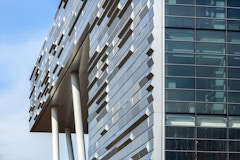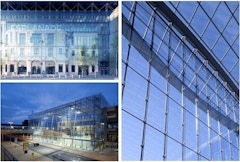
The Thermal Blanket Concept
This paper tells the story of a Double Skin Facade (DSF), where high performance and multi-disciplinary collaboration saves a library concept of

This paper tells the story of a Double Skin Facade (DSF), where high performance and multi-disciplinary collaboration saves a library concept of

The use of bidirectional scattering distribution function incorporated in a transient systems simulation program, allows engineers to accurately
Sealed indoor environments have created artificial, homogeneous ecosystems that sever ties between humans and the natural world. This paper

In the vein of mass production, manufacturers leverage repeatable parts and modular construction in an effort to maximize quality control while

Facade engineering aims at appropriately balancing the demands imposed by the context and the capabilities inherent to the materials, the geometries

Computer simulations of an automated dynamic facade in a passively heated and cooled building by using predictive modeling of short-term future

Buildings account for over 40% of global emissions (GlobalABC, 2018). Growing populations and higher standards of living are increasing pressure on

This paper presents a comprehensive interoperability workflow achieved between Rhino and Revit through Rhino-Inside. The study focuses on two case




Airflow within the cavity of double-skin facades is a key component of adaptive building envelopes which change thermophysical properties to meet



The prominence of climatically responsive building facades through the use of kinetics has proliferated in recent years due to a concern for the

This paper will address the potential of ornamental architectural terracotta surfaces to mitigate the effects of climate fluctuations that will

The largest source of air pollution in North America is the atmospheric boundary layer of a city caused by its urban canyons with pollutants produced
Many prominent, recent buildings feature forms suggesting structural surface while their enclosures are really non-load-bearing curtain wall. At the